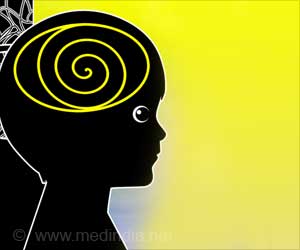Genetic mechanisms involved in neuronal migration from the retina to the brain have been discovered. This plays a key role in the generation of vision and could have applications in regenerative medicine.
- The genetic mechanisms involved in migration of neurons from the retina to the brain has been discovered
- This neuronal migration plays a key role in generation of vision in humans
- This could have important applications in regenerative medicine
The research findings have been published in the journal Development, which is a publication of the Company of Biologists, UK.
Read More..
Study Team
The study was led by Dr. Pierre Fabre, Ph.D., who is a Senior Researcher in the Department of Basic Neurosciences, Faculty of Medicine at the University of Geneva, Switzerland.The first author of the paper was Quentin Lo Giudice, who is a Ph.D. student in the Department of Basic Neurosciences, Faculty of Medicine at the University of Geneva, Switzerland.
The study collaborators included Dr. Gioele La Manno, Ph.D., and Dr. Marion Leleu, Ph.D. Dr. Manno is the Principal Investigator of the Neurodevelopmental Systems Biology Laboratory at the Brain Mind Institute, School of Life Sciences at the Swiss Federal Institute of Technology Lausanne or École Polytechnique Fédérale de Lausanne (EPFL), Lausanne, Switzerland. Dr. Leleu is a Scientist in the Gene Expression Core Facility at EPFL, Lausanne, Switzerland.
Composition of the Visual System of Humans
The visual system of humans is composed of various types of neurons that must accurately connect with specific areas in the brain in order to generate the sensation of vision. These precise connections enable the brain to transform signals received from the eyes into visual images.There are a variety of cell types involved in the generation of the sensation of vision. For example, the photoreceptors present in the retina pick-up light signals, while the neurons of the optic nerve conduct these signals to the brain. After the nerve signals reach the brain, the cortical neurons present in the visual cortex transform these electrical signals into actual visual images. Additionally, there are interneurons that interconnect various nerve cell types to form a neural network. All these neurons are derived from progenitor cells that have the capacity of giving rise to different types of nerve cells, each having a specialized function.
Gene Sequencing and Mapping of Retinal Cells
In order to elucidate the underlying genetic mechanism involved in the development and functioning of the retina, the researchers monitored gene activity by looking at gene expression patterns of individual retinal cells. They sequenced more than 6,000 retinal cells during the development of the retina in order to better understand the early specification of these retinal neurons. Using the generated sequencing data, the researchers conducted large-scale bioinformatic analyses to interpret the findings.The research team also studied the behavior of the progenitor cells during the cell cycle as well as during their progressive differentiation into various other types of cells. They also accurately mapped the different cell types during the development of the retina, as well as the genetic changes that occur during the early stages of this developmental process.
“Beyond their ‘age’ – i.e., when they were generated during their embryonic life – the diversity of neurons stems from their position in the retina, which predestines them for a specific target in the brain,” explains Fabre. “In addition, by predicting the sequential activation of neural genes, we were able to reconstruct several differentiation programs, similar to lineage trees, showing us how the progenitors progress to one cell type or another after their last division.”
Genetic Analysis of Stereoscopic Vision
It is established that the stereoscopic vision of humans occurs due to a specific configuration of the optic nerves with respect to their connections with the brain. Essentially, the optic nerve originating from the right eye connects with the left hemisphere of the brain and vice versa. However, a small fraction of the neurons from the right eye, also make connections with the right hemisphere, located on the same side of the brain. This results in overlapping of the visual fields of both eyes, which allows ‘depth-perception’ when the overlapping images are analyzed by the occipital lobe, which is the visual processing center of the brain. This gives rise to stereoscopic or binocular vision, which allows viewing of the surroundings in three-dimension (3D).“Knowing this phenomenon, we have genetically and individually ‘tagged’ the cells in order to follow each of them as they progress to their final place in the visual system,” says Quentin Lo Giudice.
The research team compared the genetic diversity of the two neural populations, which led to the discovery of 24 new genes that could play a crucial role in 3D vision in humans. “The identification of these gene expression patterns may represent a new molecular code orchestrating retinal wiring to the brain,” adds Fabre.
Potential Applications of Neuronal Migration in Regenerative Medicine
Neuronal migration involves the passage of the neurons from the retina to the brain via the optic nerve. The researchers carried out experiments to find the molecules that guide this process of neuronal migration along the correct path. They subsequently identified these molecules and found that these same molecules are also responsible for the initial growth of axons. These axons are the long thread like parts of nerve cells that conduct electrical impulses away from the cell body to adjacent neurons through the synapse, which is the junction between two nerve cells. The researchers also discovered 20 genes that are involved in this process of nerve impulse transmission. This fundamental discovery is likely to have important applications in the field of regenerative medicine.Future Plans & Concluding Remarks
The researchers conclude that further in-depth knowledge about the molecules that guide axonal growth will enable the development of therapies to treat nerve trauma.“If the optic nerve is cut or damaged, for example, by glaucoma, we could imagine reactivating those genes that are usually only active during the embryonic development phase. By stimulating axon growth, we could allow neurons to stay connected and survive,” explains Fabre, who is planning a research project to explore these possibilities.
Importantly, genetic stimulation of nerve regeneration could enable doctors to repair an injured spinal cord, which may have been damaged by an accident. In fact, some initial clinical studies have already shown promising results using this technique.
Reference:
- Single-cell Transcriptional Logic of Cell-fate Specification and Axon Guidance in Early-born Retinal Neurons - (https://dev.biologists.org/content/146/17/dev178103)
Source-Medindia












